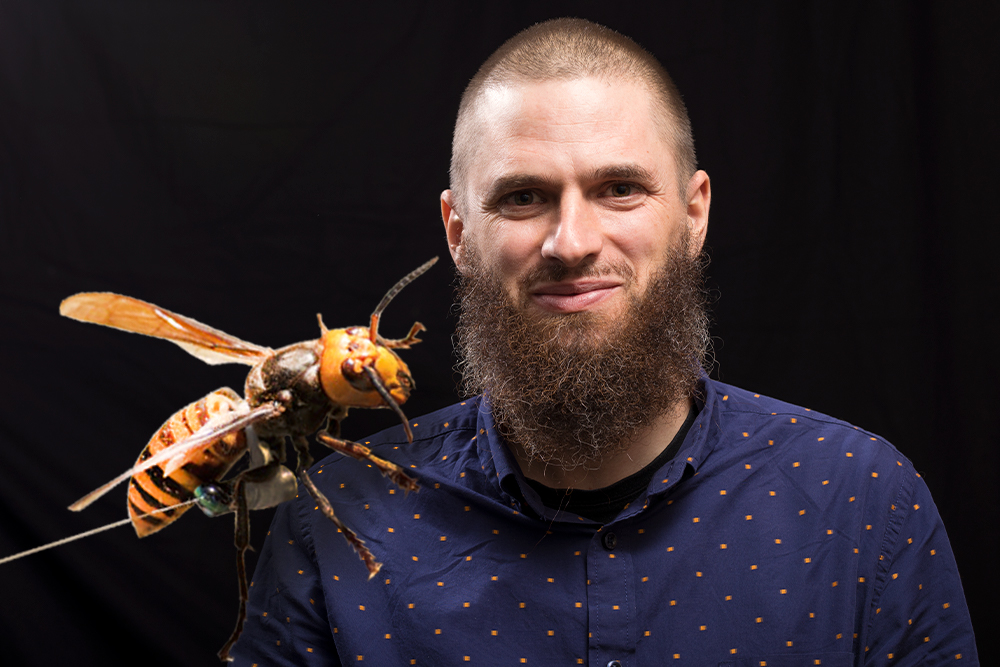If you’ve been following developments related to the “murder hornets,” properly known as Asian giant hornets, AND you know anything about Eastern Mennonite University’s own Professor Matt Siderhurst, you also know it was a matter of time before he was asked to comment.
Well, finally, he got the call. Siderhurst was among the featured experts in a recent Slate article (the headline alone is awesome):
But maybe you don’t know about either…so we’ll fill you in.
First, murder hornets. These are vicious insects who have recently landed in North America and could wipe out our already beleaguered honey bee population. Scientists recently located and destroyed the first known nest in the United States. This is the short version of the story. More on this here from the New York Times if you’re interested.
How did the scientists find the nest? They trapped a hornet, attached a radio transmitter and tracked it back to the nest.
That’s where our own Professor Siderhurst comes in. According to the Slate article: “His team pioneered the Judas insect technique on invasive coconut rhinoceros beetles in Guam.”
It’s called the Judas insect technique, because…well, you get it.
Siderhurst’s team of pioneers included Diego Barahona ‘17 and Katherine Lehman ‘18. Here they are on Guam with a fellow scientist in 2016. The team published their research in Environmental Entomology. Read more here.
Siderhurst is currently working on a number of projects that involve EMU undergrads with both foreign and domestic collaborators. While COVID has delayed international travel, four students have been selected to travel to Australia to do research under Siderhurst’s National Science Foundation International Research Experiences for Students grant. These four students have all been engaged in research projects at EMU that will dovetail with the work on tephritid fruit flies they will eventually be involved in when traveling down under, Siderhurst says.
EMU students have been the major contributors behind insect tracking and field trapping studies conducted at locations outside of Virginia, he added. “Our students have fabricated tags for insect tracking to be used in Pennsylvania, Hawaii, and Guam, and also synthesized fruit fly lures for a study in Australia.”
The journal Phytochemistry also recently published results of a three-year collaborative project between students Alexandra Raber and Reuben Peachey-Stoner, Professor Stephen Cessna and Siderhurst on the volatile compounds (pleasant smells, for you non-chemists) released by different species of conifers.
As for his recent media celebrity, Siderhurst was delighted to talk about one of his favorite topics, especially since reporter Asher Jones, on a special fellowship for the American Association for the Advancement of Science, had a unique perspective.
“She had a PhD in entomology,” Siderhurst said. “So that was amazing.”
Feature image credit: EMU; Sheri Hartman/Washington State Department of Agriculture
More coverage:
